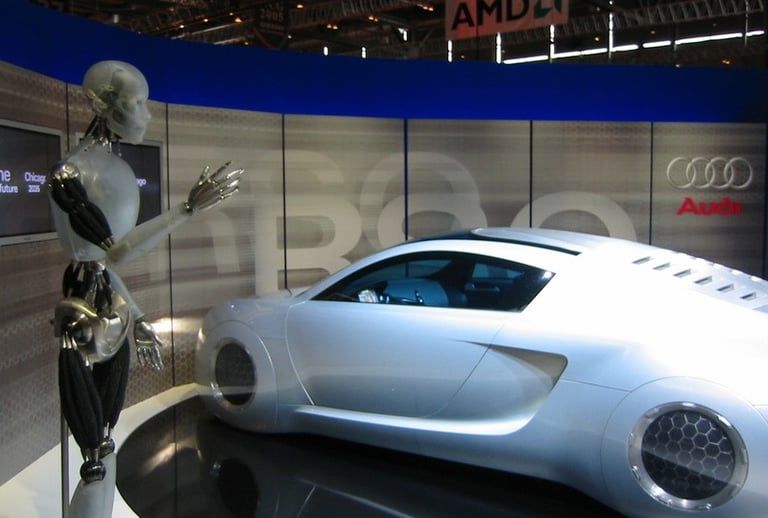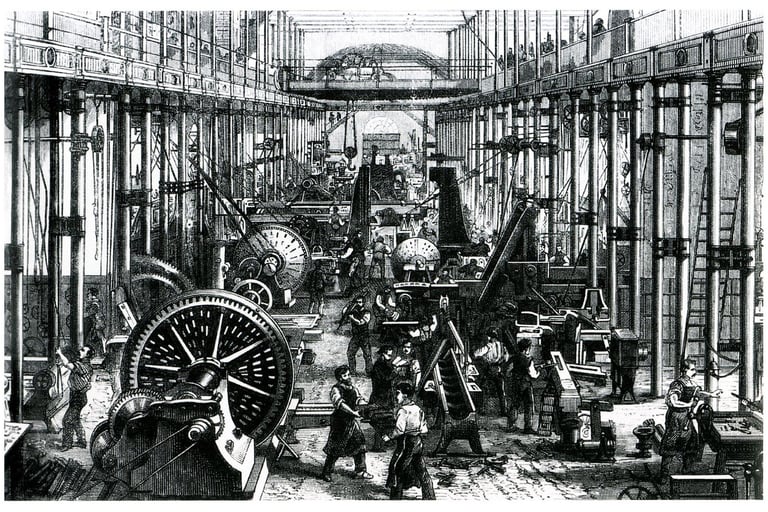COVID-19: A Booster Dose for 3D Printing
Discover how COVID-19 revolutionized the 3D printing industry, turning challenges into innovation! Uncover the transformative impact of this global pandemic on technology and manufacturing. Don't miss out on this insightful read!
INDUSTRY 4.03D PRINTING ADDITIVE MANUFACTURINGINNOVATIONMANUFACTURINGMASS CUSTOMIZATIONGLOBALIZATIONCOVID 19
Indrajeet Yadav
5/20/20203 min read


3D Printing: The Third Industrial Revolution
They say diamond cuts diamond. Well then, can one disruption kill another? Seems so. Widely regarded a disruptive innovation, 3D Printing is one technology that can and is fighting the interruption of the medical supply networks by the COVID-19 pandemic. Its real promise lies in its capacity to drastically shorten multiple supply chains.
3D Printing companies are already producing testing swabs and personal protection equipment (PPE) such as masks and face shields [1]. Still, others are developing ventilators and respirators [1]. But the applications of the technology transcend the emergency response to the pandemic. They also go way beyond the medical field.
An online file of the part’s diagram and two odd supervisors – is all that you require to “print” the necessary part [2]. The printer doesn’t have to be located in a far away manufacturing plant – you can set it up where the parts are required. With the lockdown severely restricting transport, this feature becomes invaluable.
Now, decentralized production with short supply chains has vast and permanent implications for the manufacturing world. In fact, if the groundbreaking potential of 3D Printing materializes, the technology will reverse countless manufacturing practices ushered in by the Industrial Revolution.
No wonder observers call it the Third Industrial Revolution!
Certainty over Cost
Crippling of global supply chains is among the most economically catastrophic consequences of the COVID-19 pandemic. Globalisation created and reinforced prosperous international supply networks. With lockdowns and social distancing, the flow in these once mighty channels has dried down to a humble trickle.
As a result, many expect industries to develop shorter supply chains in the post-COVID world. The guarantee of availability inherent in short, regional supply chains overrides the cost advantage ingrained in the long, global supply networks. Strategic tussles and surging economic nationalism will further add fuel to the already raging fire [3].
Precisely, this situation plays into the hands of 3D Printing.
Additive Manufacturing is a technically more correct term for 3D Printing. Instead of making the final part by removing material from raw stock as is the conventional practice, 3D Printing deposits layer upon horizontal layer of fused material to manufacture the part. Each layer is thinner than a wafer and represents the cross section of the part in the horizontal plane at a certain height.
With some limitations, all you need to do to make a different object is change the code that guides the printer when depositing the molten material. You don’t need separate tools for different parts as in traditional manufacturing [4].
Consequently, you are not compelled to mass produce identical parts to make the manufacturing operation economically profitable, a principle called economies of scale [5]. This principle also necessitates the concentration of production facilities at a few large centres. On the contrary, you can set up 3D Printing shops in the neighbourhood, right at the point of sale.
What the absence of this mass production obligation also does in liberate the creative energies of designers. They can modify the code to customize each part. Mass customization, not mass production. And even if the production cost of a made-to-order part is higher, there are virtually zero inventory and transport costs involved!
A short and sweet supply chain less exposed to supply shocks and endowed with tremendous creativity – all the makings of the Third Industrial Revolution [6].
However, the technology has to push through multiple roadblocks before it can find its mojo – high power consumption [7] [8], expensive printers [9], and its present inability to print large objects [9], several materials [9], and geometries [10]. Moreover, 3D Printing is slower at mass production than conventional manufacturing [9].
Reversal of Standards
Just over two centuries ago, the First Industrial Revolution in Britain launched the first phase of globalization [11]. And the agent for this international integration was the steam ship. But with 3D Printing threatening its creator, globalisation too is unsurprisingly in deep waters with a storm approaching fast.
Will any (steam) ship responds to its SOS calls? Only time will tell.
For more such content that connects technological developments to the broader historical, social, and economic picture, contact us at indrajeety1981@gmail.com or +91-9822052945.
#3DPrinting #COVID19 #Coronavirus #AdditiveManufacturing #ThirdIndustrialRevolution #IndustrialRevolution #Pandemic #DecentralizedManufacturing #CustomizedManufacturing #MassCustomization #MassProduction #FactorySystem #Globalization #EconomiesOfScale #SupplyChain #SupplyNetwork
References
https://www.forbes.com/sites/stevebanker/2020/04/13/covid-19-and-3d-printing/#6b2d42193f7a
https://www.investopedia.com/insights/what-are-economies-of-scale/
https://techcrunch.com/2016/02/26/is-3d-printing-the-next-industrial-revolution/
https://www.techrepublic.com/article/the-dark-side-of-3d-printing-10-things-to-watch/
https://www.livescience.com/38323-is-3d-printing-eco-friendly.html
https://www.3dhubs.com/knowledge-base/3d-printing-geometry-restrictions/
https://www.weforum.org/agenda/2019/01/how-globalization-4-0-fits-into-the-history-of-globalization/


Audi RSQ Concept Car made via 3D Printing (Rapid Prototyping)
Credits: Eirik Newth
German manufacturing plant of the 19th-20th century
Credits Wikipedia
